There's a phenomenon on social media lately that whenever a celebrity chef expresses an opinion on political or social issues, a chorus of those whose sensibilities diverge insist that the chef should "stay in their lane." In other words, talk about food all you want, but keep your politics to yourself. The reaction seems inherently ridiculous to me – if you don't like it, the "unfollow" button is a simple, elegant solution – and hypocritical. Unless, that is, all these "stay in your lane" folks are actually career political scientists themselves, or perhaps professional life coaches.
I bring this up here because Chef José Andrés is a powerful retort to that kind of nonsense, someone whose talk has been backed up by meaningful, thoughtful action. The day after Hurricane Harvey cleared Texas, he was in Houston feeding people. A month later when Hurricane Maria decimated Puerto Rico, he was there within days serving meals. Over the past weeks, he's mobilized a brigade of food trucks and canteen kitchens to serve 100,000 meals a day, while getting minimal support from the federal government, in a territory with an almost entirely broken infrastructure.[1]
But this shouldn't come as a surprise. His charity work is not simply a reaction to recent events, but a commitment that dates back to at least 2010, when he founded a non-profit, World Central Kitchen, as a response to a devastating earthquake in Haiti. When, in mid-2016, then-candidate Trump described Mexicans as criminals and rapists, Andrés – an immigrant and naturalized U.S. citizen himself – didn't just gripe about it on Twitter. He pulled out of a multi-million dollar restaurant deal at a Trump property in DC, risking the inevitable lawsuit from the litigation-happy candidate. (Andrés countersued, and the case settled in April on undisclosed terms.)
All of which is to say: José Andrés can cruise in any lane he wants, as far as I'm concerned.
While the work he's doing now in Puerto Rico is infinitely more important, those lanes do actually include chef and restaurateur as well. Andrés' restaurants include the Michelin two-star Minibar, along with a mini-empire of places in DC, LA, Miami, and Las Vegas, the last of which I visited recently for a conference.[2] While there, I squeezed in a dinner at é by José Andrés, an 8-seat "restaurant within a restaurant" inside Jaleo at the Cosmopolitan.
(You can see all my pictures in this é by José Andrés - Las Vegas flickr set).
The format of é is patterned after the original iteration of Minibar in DC with a dollop of Vegas glitz. Its roughly 20-course tasting menu is unabashedly inspired by the creations of Andrés' mentor, Ferran Adrià, with whom Andrés worked at El Bulli in Spain before going on to tremendous success in the U.S. I'd visited é once before, though I hadn't realized how long ago it had been – nearly six years. The room, centered by a polished metal chef's counter surrounded by walls lined with tiny drawers and odd tchotchkes, hasn't changed much. One of the chefs said it was meant to make you feel like "You're inside Chef Andrés' head." (It kind of does.) The menu was almost entirely different, though there were some echoes of prior meals.
Guests are corralled at a table in Jaleo and offered a drink before the dinner at é starts. After a few minutes, the hostess divulges that the centerpiece on the table is also the first course: a cracker flavored with black olive, stuck with edible flowers.
Then upon entering the cloistered dining room, a cocktail: sangria, frozen and powdered to a slushie-like consistency, with compressed melon, sour cherry pearls, and fresh mint leaves.[3]
A cheese course of sorts: a soft-frozen manchego and beet rose topping a walnut cracker, "stones" of idiazabal cheese with a jamón and rosemary glaze nestled atop a bowl of river stones; and a "pizza" of San Simon cheese topped with oregano cream, dried tomato, and fresh shaved truffle.
(continued ...)
"Wonder Bread." It looks like the supermarket staple, but the "wonder" is that it's actually crisp, feather-light meringue, made into a sandwich with a filling of foie gras mousse and slivered strawberries. This is the kind of dish that makes sense of what Andrés' mentor Adrià called "techno-emotional cuisine" – visually resembling a homey peanut butter and jelly sandwich and nostalgically evocative of its flavors, but in a manipulated and elevated format.
One of the things that makes é such a fun experience is the interaction with the chefs, who do final preparations and plating of each course at the counter. It's a brilliant bit of dinner theater which builds anticipation for each dish, and gives curious diners the chance to ask questions and learn more about the techniques or ingredients (and the chefs really do a great job responding without being either patronizing or über-wonky). Here, Rick is assembling a delicate "air bread" (like a crispy miniature pita) filled with tomato – a reconstructed pan con tomate – topped with a slice of lush jamón ibérico. It's an outrageously good bite.
As is this: a sort of nigiri of squiggly little uni-infused crispies, topped with lobes of uni and a sheet of translucent, half-melted lardo. I could have eaten a half-dozen more.
Remember spherification? There was a time about ten years ago when chefs were making everything they could lay their hands on into little bouncy balls with liquid centers. They're still playing with the technique at é, where they serve a white sangria sphere nestled in a broad leaf over a bed of ice. You pick the leaf up to your face, tilt it, and let the wiggly ball of sangria slide down into your mouth. The "chupito" has a few more tricks up its sleeve, too – bits of fruit and flowers suspended within, a cava bath in an iSi canister for a carbonated kick, and a last-minute spray of elderflower liqueur for a fresh floral note.[4]
Maybe the dish of the night: asparagus topped with dots of lemon pith purée, pellets of nitrogen-frozen egg yolk, a warm, bright, frothy asparagus escabeche, and a few dollops of caviar. The texture of the asparagus was perfect, just a bit of snap but not woody or tough, with a kaleidoscope of complementary elements: warm, cold, rich, tart, silky, briny. Just wonderful.[5]
A seafood course next: a live (until very shortly before being served) scallop, chopped, placed back in its shell, and then concealed beneath a molded miniature shell with a buttery texture laced with truffle.
Another contender for dish of the night: dungeness crab, the meat picked and placed back in the carapace, anointed right before eating with a vial of warm crab juices and a spoonful of crisp bread crumbs. Where the asparagus dish succeeded with a multiplicity of elements, this one succeeded through simplicity – just delicious, warm, sweet, salty crab. A glass of one of my favorite wines – López de Heredia Viña Gravonia Rioja Blanca (2006), with its oxidative, sherry-like nutty, waxy, herbaceous notes – was a magical pairing.[6]
A rich indulgence: silky foie gras mousse, topped with a dollop of frothed almond milk and slivered plums, and a drizzle of chicken jus. Also great with that aged white Rioja.
The next couple courses were the biggest portions of the evening, and for me, the least impactful. Seared fluke was served over a meaty picadillo, a take on mar y montaña or surf 'n' turf. A version of Catalan fricandó represented the meat and potatoes of the evening: a wobbly slab of braised beef cheek, some (underseasoned) liquid potato gnocchi, a few nice plump chanterelles, and a pine nut praline substituting for the traditional picada.[7]
More fun and games: an empanada made of pressed cotton candy, filled with foie gras and crunchy corn nuts. This one also has its origins in the old Minibar, where Andrés used to wrap foie gras, or sometimes barbecued eel, in cotton candy.
As we transition into desserts, a traditional Catalan combination of milk and honey, in the form of miel y mató – a fresh farmer's style cheese, rendered into a frozen powder, with a blob of gelatinized honey, and cubes of toasted bread crumbs.[8]
From Catalonia we go to Basque country for the next dessert with intxaursaltsa, traditionally a creamy sort of pudding of nuts, sugar and cinnamon. Andrés adds some trompe l'oeil walnut shells fashioned from walntu praline (made in a mold fashioned from actual walnut shells), which conceal juicy berries hidden underneath.
The next dessert heads back to Catalonia for another classic, crema catalana. There was another nice trick here that I'd never seen before. The plate comes out empty save for a ring mold, and the chef pours a liquid custard inside the mold, then proceeds with the rest of the plating (candied egg yolk and citrus, caramel, fresh citrus zest). By the time the plating is finished, the custard is magically set. (A well-chilled plate and ring mold enable the gelatin in the custard to set quickly). And, parlor tricks aside, it's a really nice crema catalana, the creaminess offset by bright sweet citrus and an assertively bitter, dark caramel.
For some final bites, a cherry bomb with a chocolate shell filled with molten, spherified cherry, a sliver of vanilla bean serving in place of the stem; and a little turron tart, topped with a gilded marcona almond. With them, é serves José's "Ultimate Gin and Tonic," a tribute to the Spanish obsession with the cocktail, and indeed one of the finest examples I've had, festooned with garnishes that mimic the aromatics perfuming the gin. I've never had a G&T as an after-dinner drink, and it's bracing and refreshing and probably entirely too much alcohol after the tasting which preceded it.
To close, a few mignardises – a sort of creamsicle of frozen citrus with a dollop of cream, a brick of salted chocolate, a gin and tonic marshmallow – and then a teapot of mint leaves with a few chocolate leaves among them, a sort of After 8 dinner mint which you're given your own tweezers to retrieve.
So now that several years have passed, is it OK for me to admit that El Bulli – once considered "the best restaurant in the world," whatever that means – was not even remotely close to being a favorite meal of mine? While it was a fascinating, interesting, and challenging experience, it was only in isolated instances something that is also kind of important: delicious.
I don't think I'm alone. It's become fashionable to dismiss what Adrià called "techno-emotional" cooking, and what the rest of the world tended to call "molecular gastronomy," as a passing phase. Our visit to El Bulli was right around the time that this style, with its focus on science, technology and ingredient manipulation, began to be supplanted by the "New Naturalism" of Copenhagen's Noma.[9] (Someone cleverer than me described this moment as being when the "I went to El Bulli" story was replaced with the "I went foraging with Rene Redzepi" story). And a look at the restaurant universe would seem to confirm the conclusion: you'll see a lot more open-fire hearths and fermentation jars than Thermomixes and alginate baths in the kitchens these days.[10]
Which makes é something of an anomaly. At é, they're still doing spheres and powders and liquid nitrogen frozen pellets, and trompe l'oeil walnut pralines in the shape of walnuts ... and you know what? They make it work! It's a really fun, playful, interesting meal, where pretty much everything tastes pretty wonderful, and several dishes were really exceptional. What's more, the intimate setting, and the close interaction with the chefs, provide a "dinner and a show" component that really adds to the experience.
The hundreds of thousands of meals that José Andrés is preparing and delivering in Puerto Rico are a lot more meaningful and valuable then this twenty-course bacchanal. But I'm glad Andrés is doing both. Give him as many lanes as he wants.
é by José Andres
Cosmopolitan Las Vegas
3708 South Las Vegas Boulevard, Las Vegas, Nevada
702.698.7950
[1] Meanwhile, the President of the United States was busy venting about the Golden State Warriors and the National Football League. When the disaster in Puerto Rico finally caught his attention after several days, he spent his time picking twitter fights with the mayor of San Juan, being befuddled by "big water," throwing paper towels at people during his brief visit to the island, and threatening to pull FEMA and other federal support even while much of the territory is still without power and many residents still lack reliable access to food and water. But here I am, drifting out of my lane.
[2] Yes, it was awful timing in light of the recent horrific shooting there, but Vegas carries on, and the businesses and their employees need and appreciate the support of visitors. Is there any place that hasn't been the site of an awful human tragedy lately? Honestly, it feels frivolous and superfluous to be writing about high-end meals given everything happening in the world right now, but maybe reading this can give some brief respite from all that. For what it's worth, I also donated the price of a meal at é to World Central Kitchen, and if you'd like to support the efforts of Andrés and many others in Puerto Rico, I encourage you to also consider donating the value of your next dinner – or more!
[3] While writing this, I thought to look back at my notes from my visit, nearly a decade ago, to Minibar in DC (remember Chowhound?). This was way back in the day, before the Michelin stars, when "minibar" was literally just that – a tiny bar counter (actually more like a sushi counter) tucked into a corner of Café Atlantico restaurant. And that meal started with ... a liquid nitrogen frozen sangria slushie garnished with a cube of partially frozen watermelon!
[4] This too goes back to those old Minibar days, where I was served a spherified and carbonated mojito using the same techniques. On my prior visit to é, I sampled another iteration similar to this one with white sangria.
[5] This and many other dishes were served with two small spoons for utensils, the idea being that you use one of the spoons to scoop and assemble little bites in the other; it's pretty clever and effective.
[6] Pairings were a highlight throughout the meal. While there are a few options, the baseline "Spanish Pairing" hit all the right spots for me: a bubbly biodynamic single-estate brut rosé from Raventós i Blanc to start, followed by a glass of manzanilla pasada sherry, then a spritzy, bright txakolina from Txomin Etxaniz with the seafood, followed by that López de Heredia, a couple reds from less celebrated regions of Spain – mencia from Bierzo's Castro Ventosa, a monastrell-cab blend from Jumilla's Juan Gil – and for dessert, a moscatel from Jorge Ordóñez.
[7] I know when you're charging $250 a head you don't want to send anyone home hungry, especially in an arguably less "sophisticated" dining environment such as Las Vegas, but these two courses in particular felt like filler to me.
[8] It's kind of funny that even though this felt like an almost completely new meal to me, there are threads which go back to the first Andrés meal I had at Minibar nearly a decade ago. He was playing with milk and honey back then, too, when I had a dessert of powdered frozen yogurt topped with powdered honey and drizzled with more honey and olive oil. Maybe early onset dementia is taking hold.
[9] We got there late in the game in 2010, a year before the restaurant closed to become the El Bulli Foundation.
[10] Writer Lisa Abend, who took a behinds-the-scenes look at El Bulli in a book called "The Sorcerer's Apprentices," was ahead of the curve, wondering – in 2008 – "Isn't anybody tired of this stuff by now?" Of course, people tend to forget that Redzepi was himself an Adrià disciple, having worked at El Bulli before going back to Copenhagen to open Noma.
[2] Yes, it was awful timing in light of the recent horrific shooting there, but Vegas carries on, and the businesses and their employees need and appreciate the support of visitors. Is there any place that hasn't been the site of an awful human tragedy lately? Honestly, it feels frivolous and superfluous to be writing about high-end meals given everything happening in the world right now, but maybe reading this can give some brief respite from all that. For what it's worth, I also donated the price of a meal at é to World Central Kitchen, and if you'd like to support the efforts of Andrés and many others in Puerto Rico, I encourage you to also consider donating the value of your next dinner – or more!
[3] While writing this, I thought to look back at my notes from my visit, nearly a decade ago, to Minibar in DC (remember Chowhound?). This was way back in the day, before the Michelin stars, when "minibar" was literally just that – a tiny bar counter (actually more like a sushi counter) tucked into a corner of Café Atlantico restaurant. And that meal started with ... a liquid nitrogen frozen sangria slushie garnished with a cube of partially frozen watermelon!
[4] This too goes back to those old Minibar days, where I was served a spherified and carbonated mojito using the same techniques. On my prior visit to é, I sampled another iteration similar to this one with white sangria.
[5] This and many other dishes were served with two small spoons for utensils, the idea being that you use one of the spoons to scoop and assemble little bites in the other; it's pretty clever and effective.
[6] Pairings were a highlight throughout the meal. While there are a few options, the baseline "Spanish Pairing" hit all the right spots for me: a bubbly biodynamic single-estate brut rosé from Raventós i Blanc to start, followed by a glass of manzanilla pasada sherry, then a spritzy, bright txakolina from Txomin Etxaniz with the seafood, followed by that López de Heredia, a couple reds from less celebrated regions of Spain – mencia from Bierzo's Castro Ventosa, a monastrell-cab blend from Jumilla's Juan Gil – and for dessert, a moscatel from Jorge Ordóñez.
[7] I know when you're charging $250 a head you don't want to send anyone home hungry, especially in an arguably less "sophisticated" dining environment such as Las Vegas, but these two courses in particular felt like filler to me.
[8] It's kind of funny that even though this felt like an almost completely new meal to me, there are threads which go back to the first Andrés meal I had at Minibar nearly a decade ago. He was playing with milk and honey back then, too, when I had a dessert of powdered frozen yogurt topped with powdered honey and drizzled with more honey and olive oil. Maybe early onset dementia is taking hold.
[9] We got there late in the game in 2010, a year before the restaurant closed to become the El Bulli Foundation.
[10] Writer Lisa Abend, who took a behinds-the-scenes look at El Bulli in a book called "The Sorcerer's Apprentices," was ahead of the curve, wondering – in 2008 – "Isn't anybody tired of this stuff by now?" Of course, people tend to forget that Redzepi was himself an Adrià disciple, having worked at El Bulli before going back to Copenhagen to open Noma.







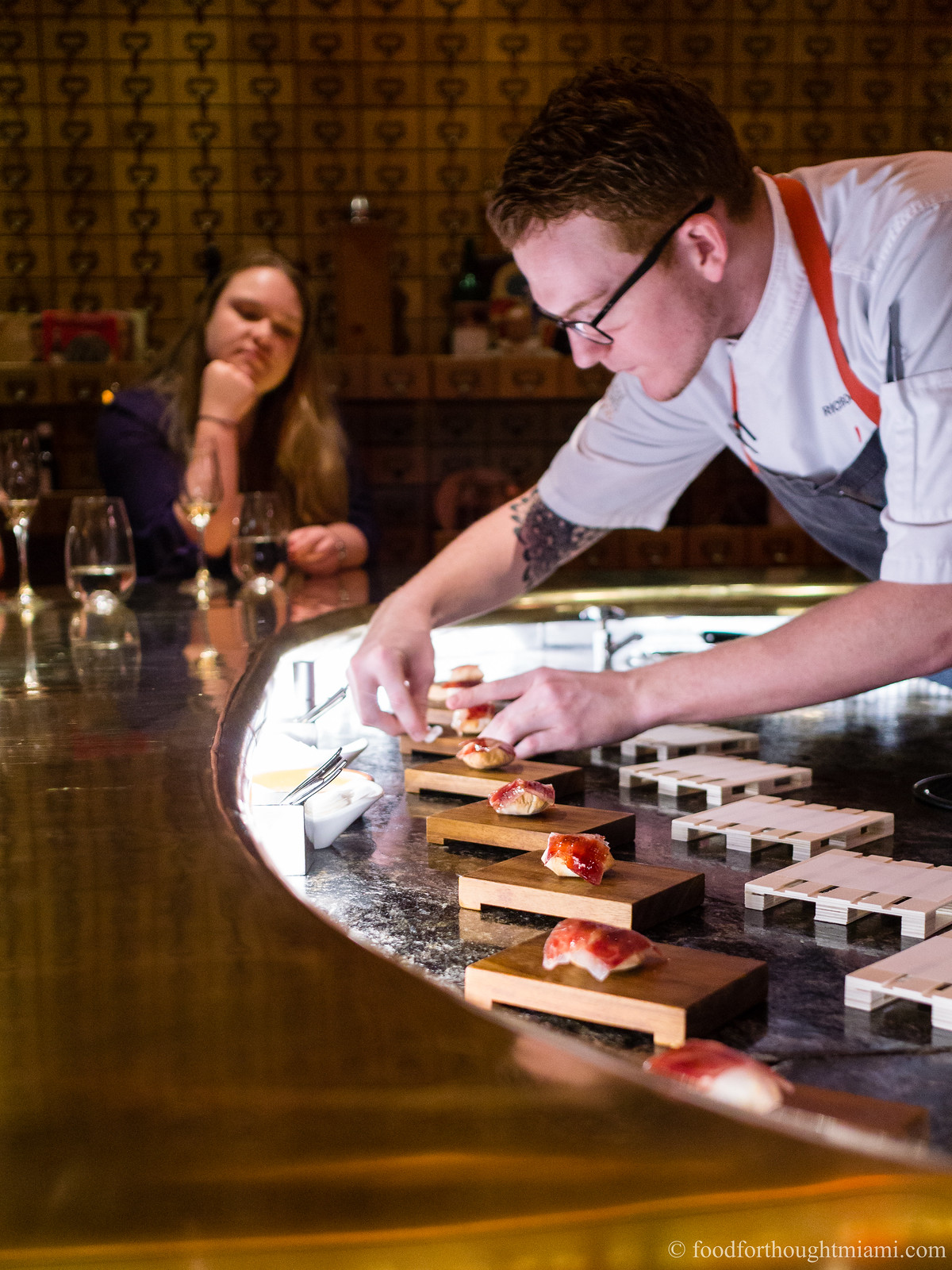
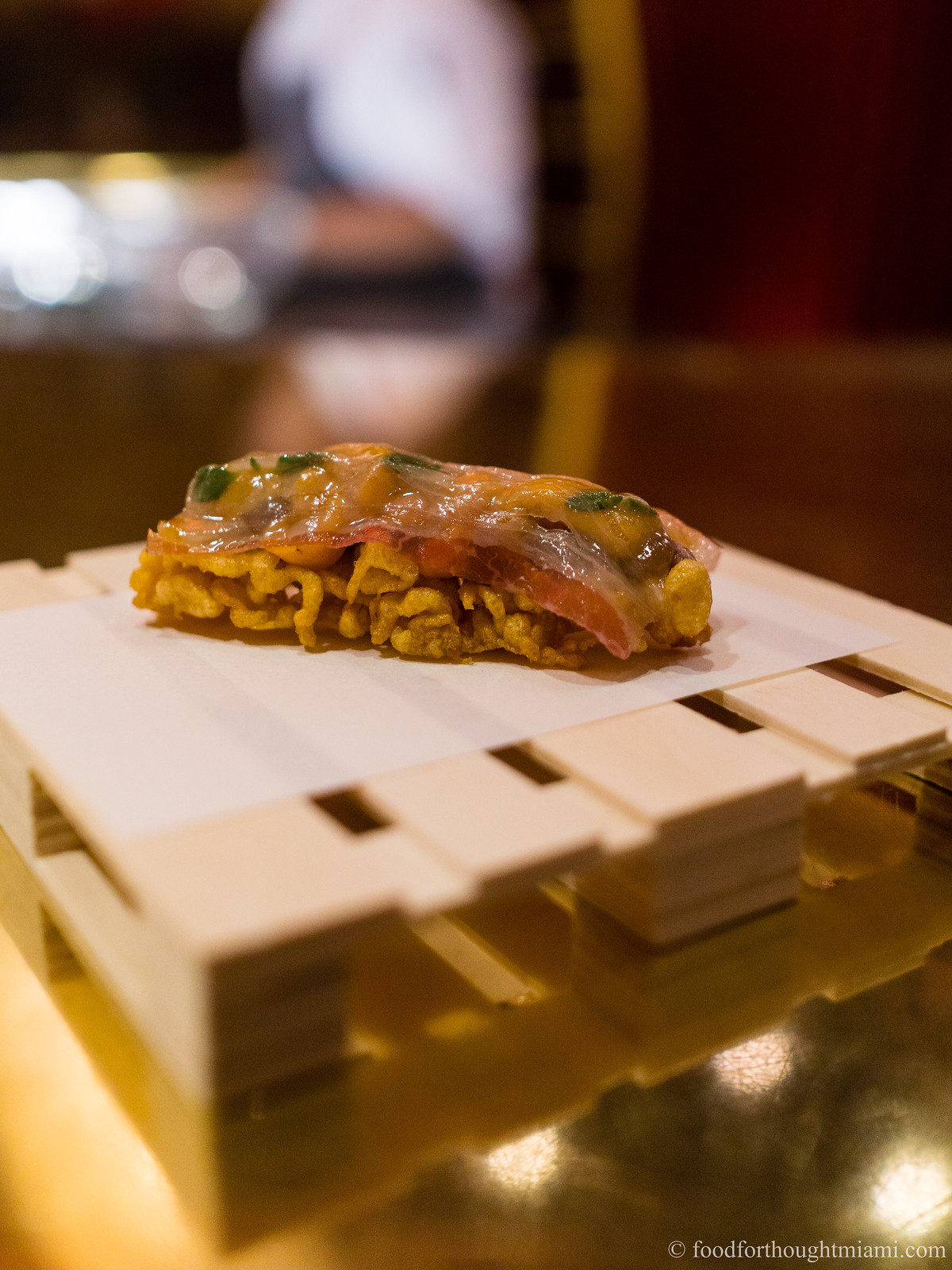
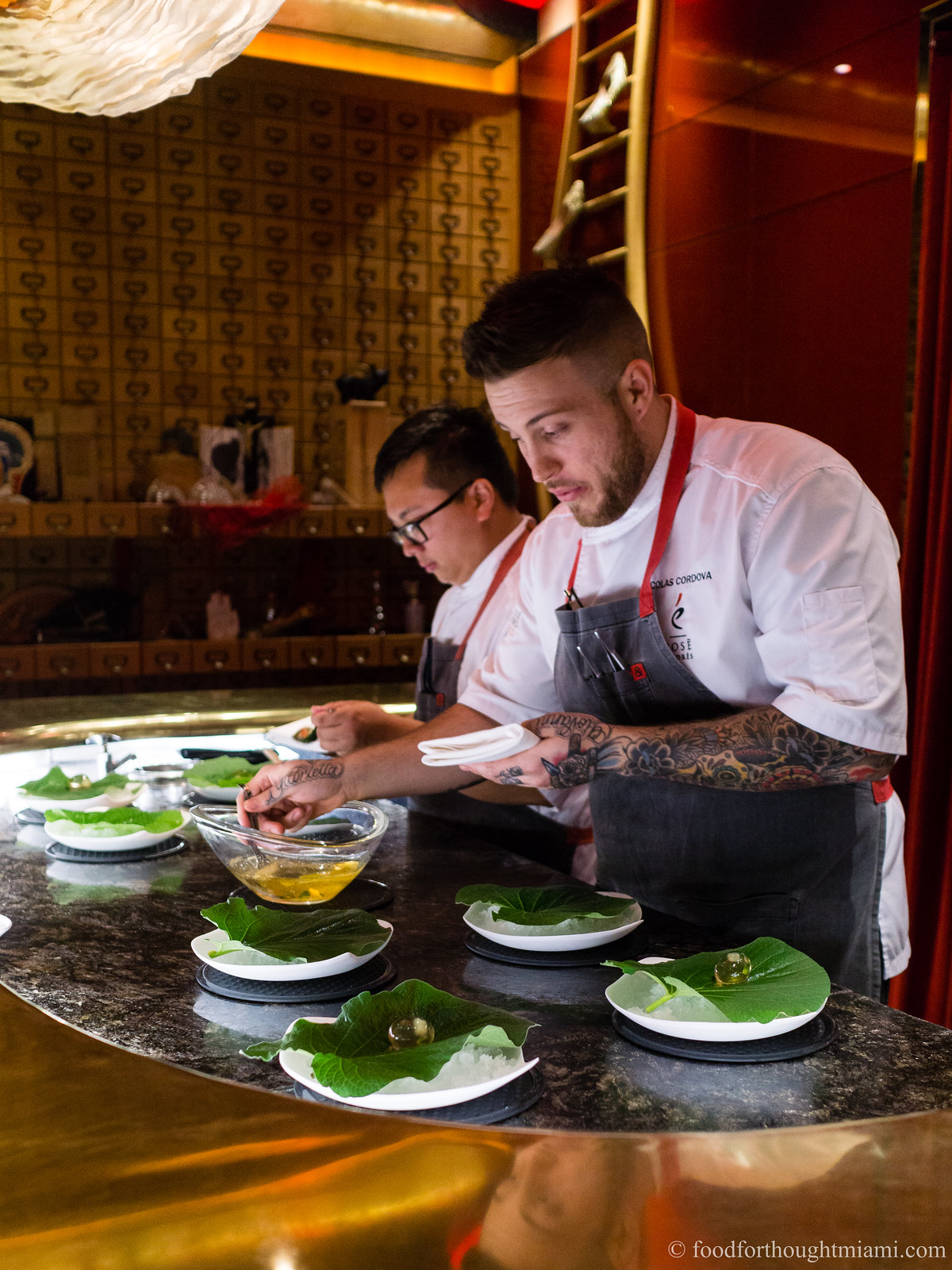



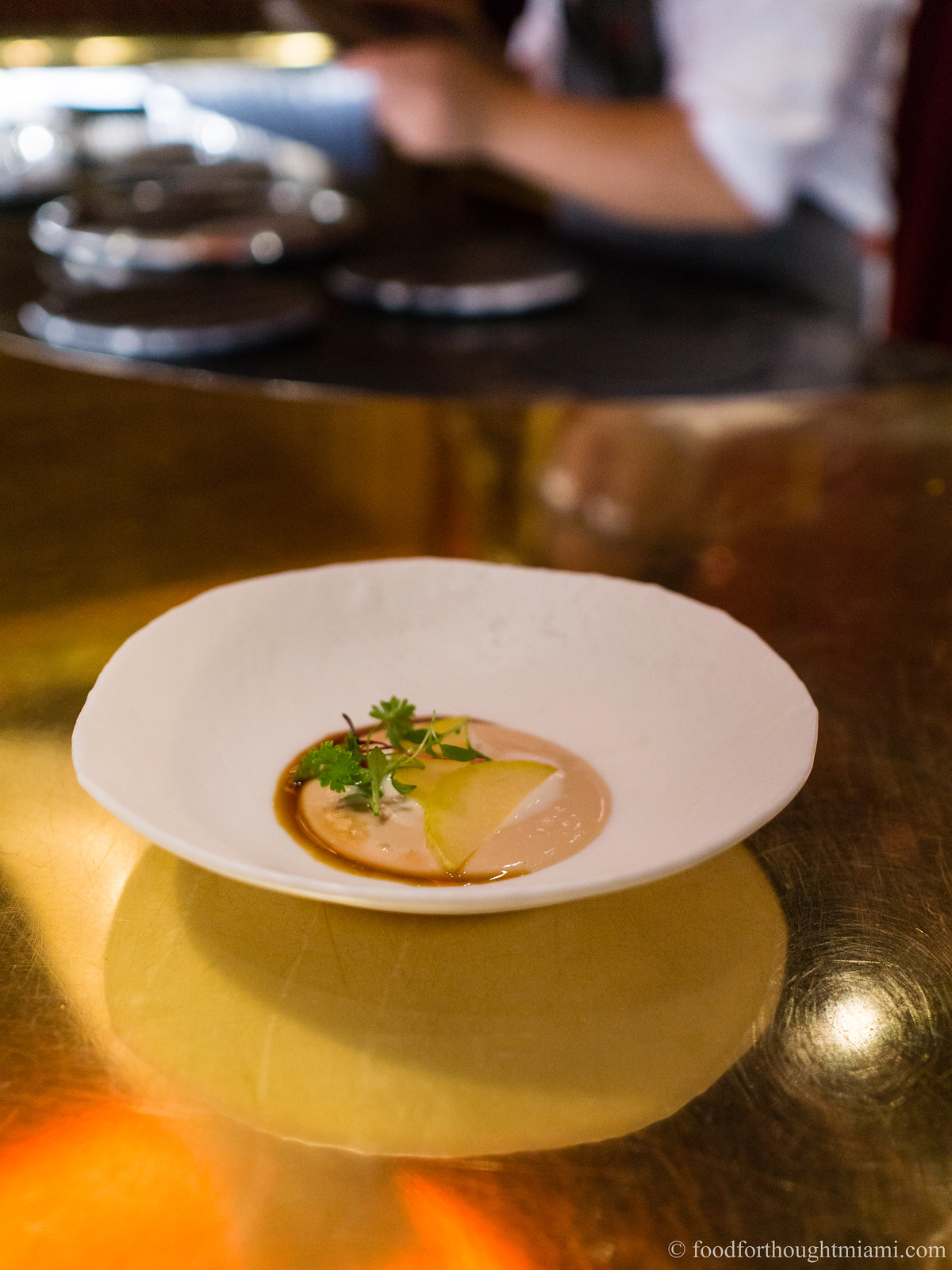
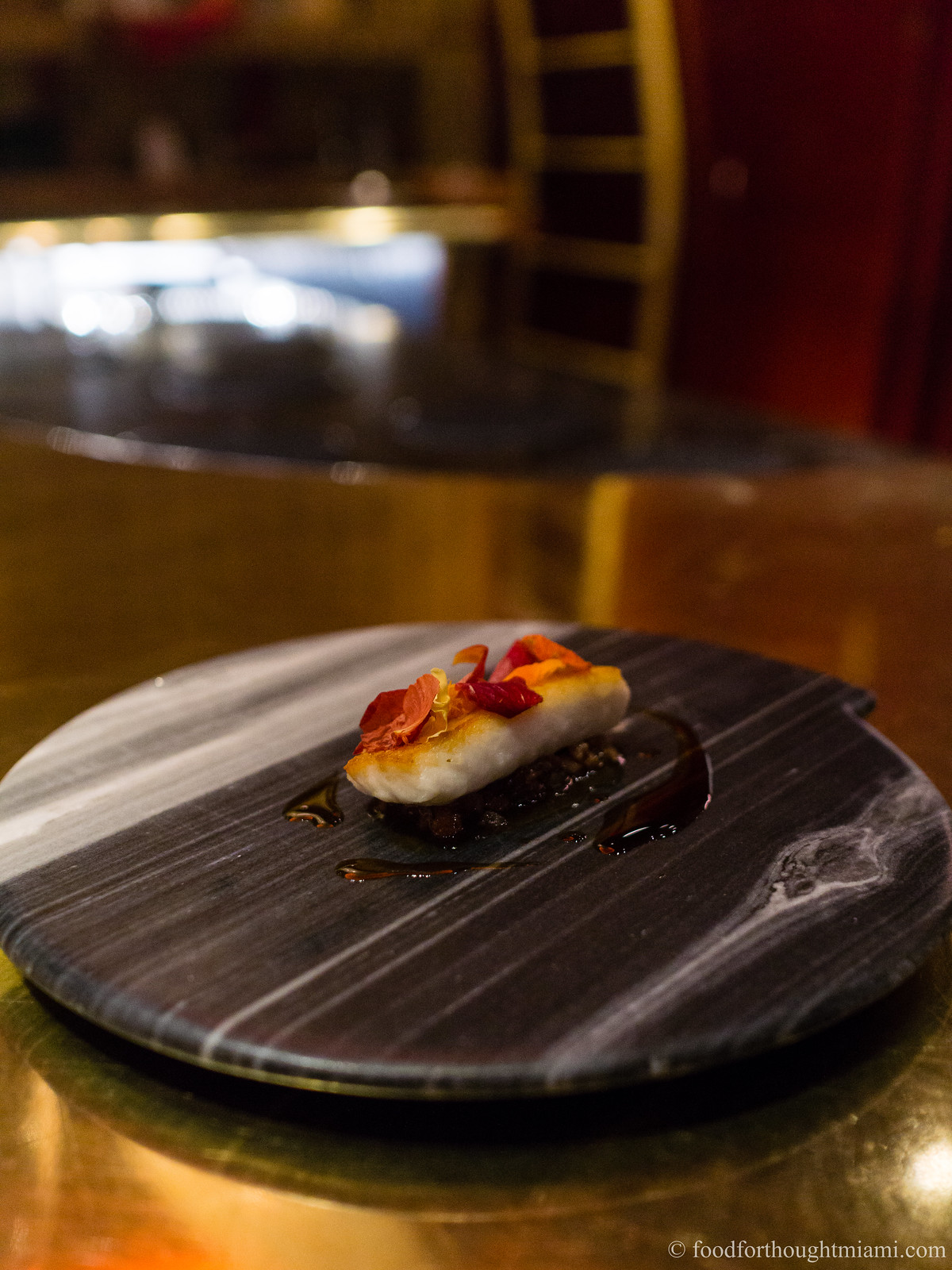

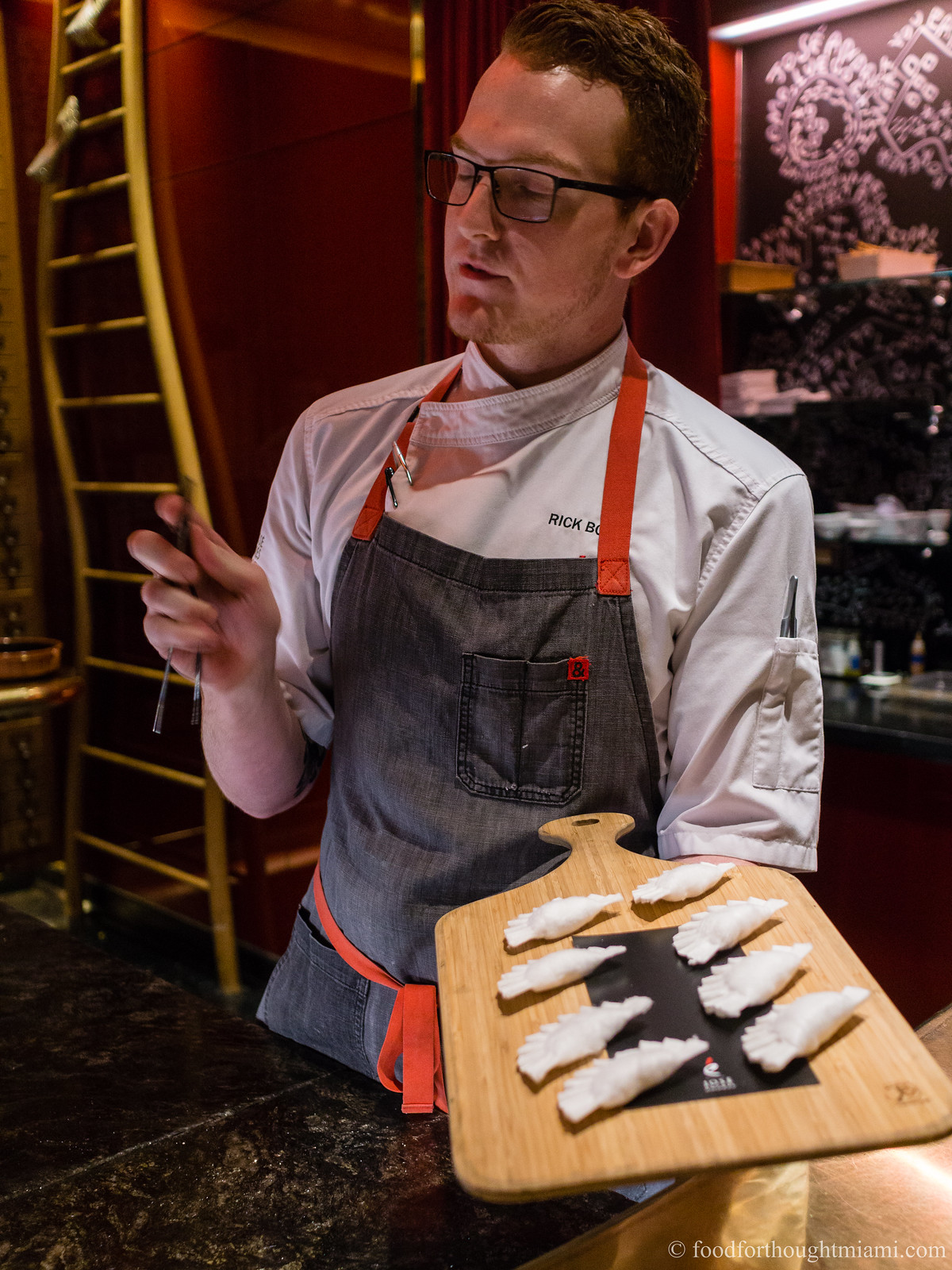
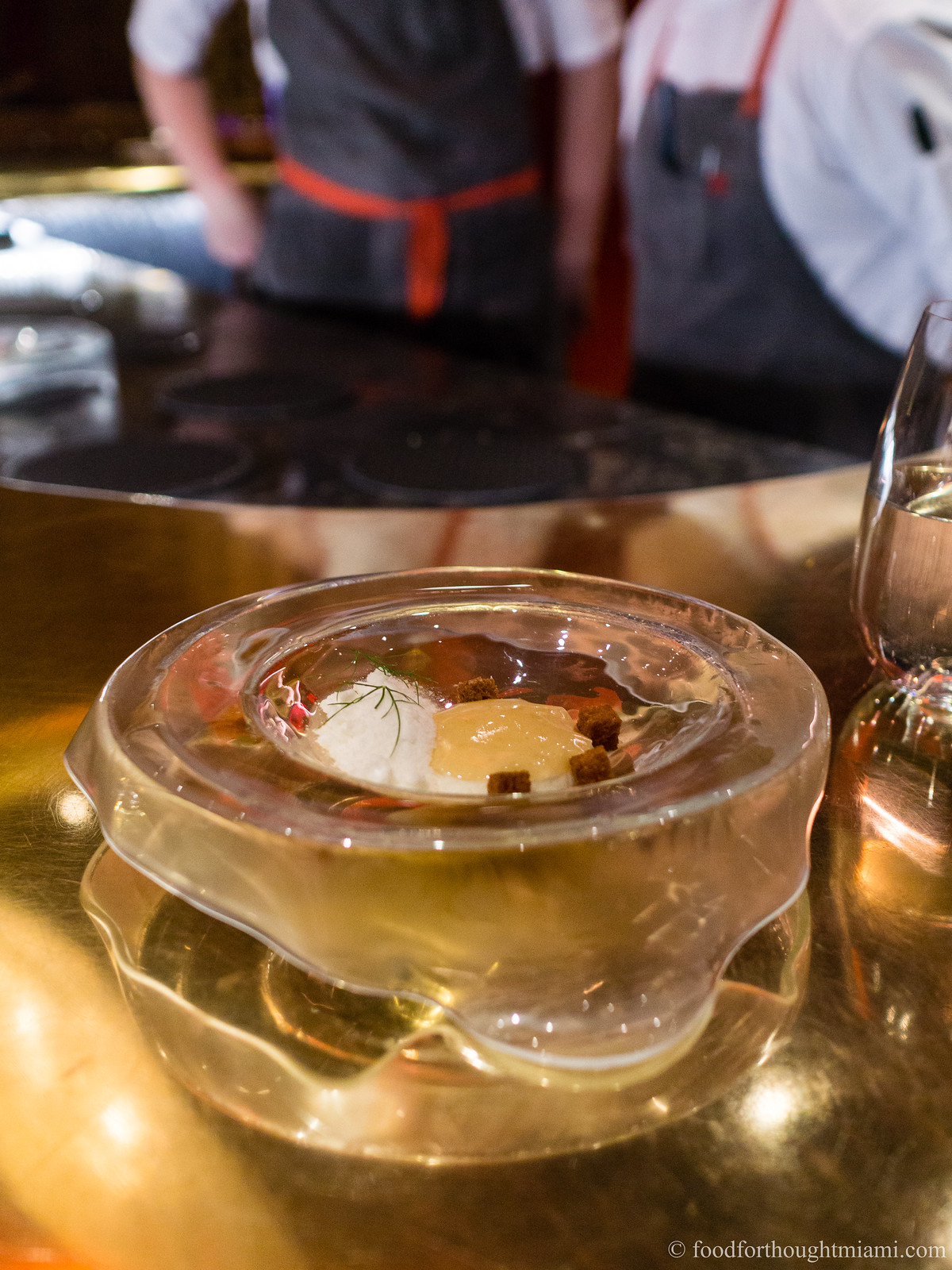
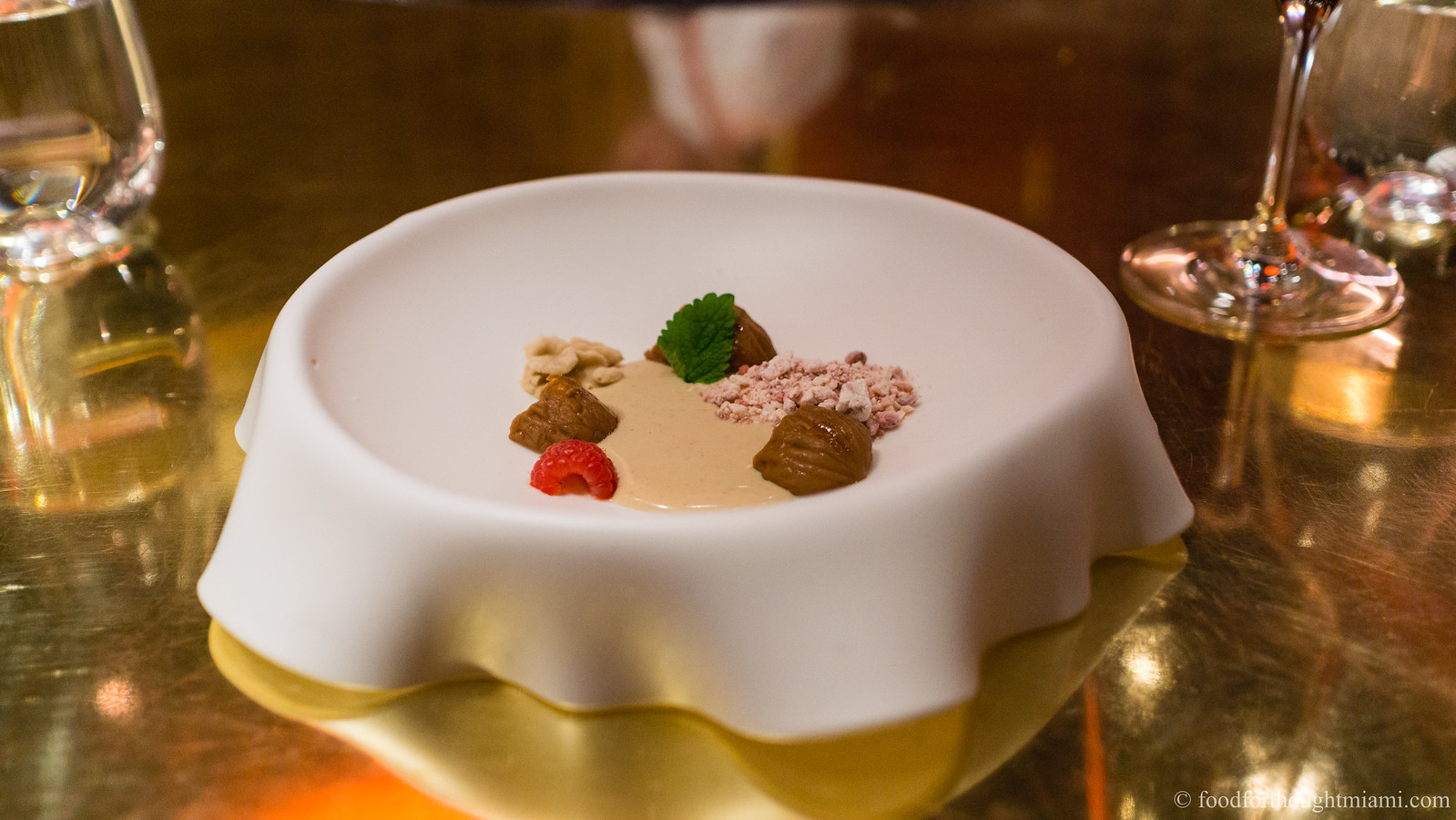
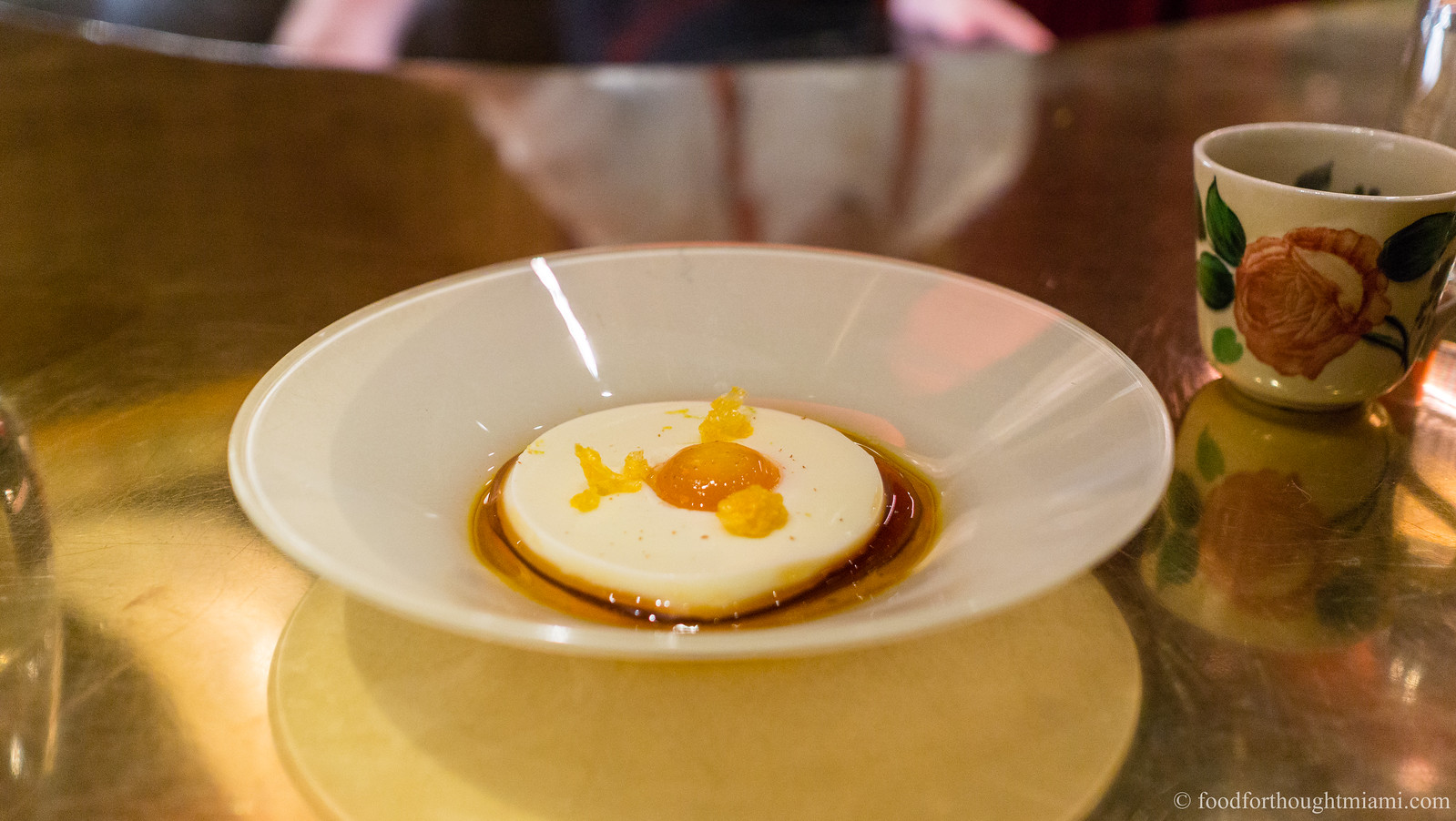

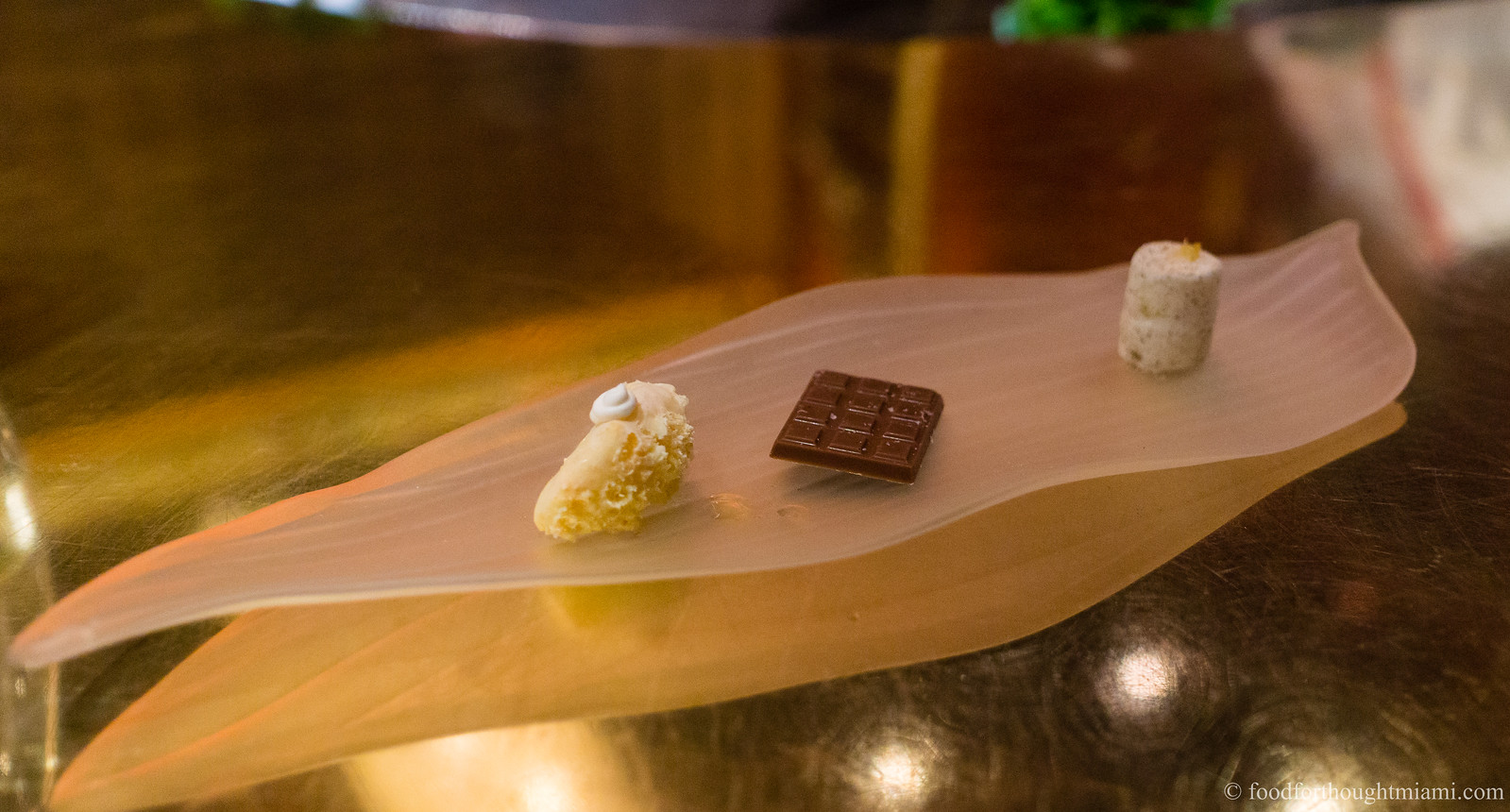

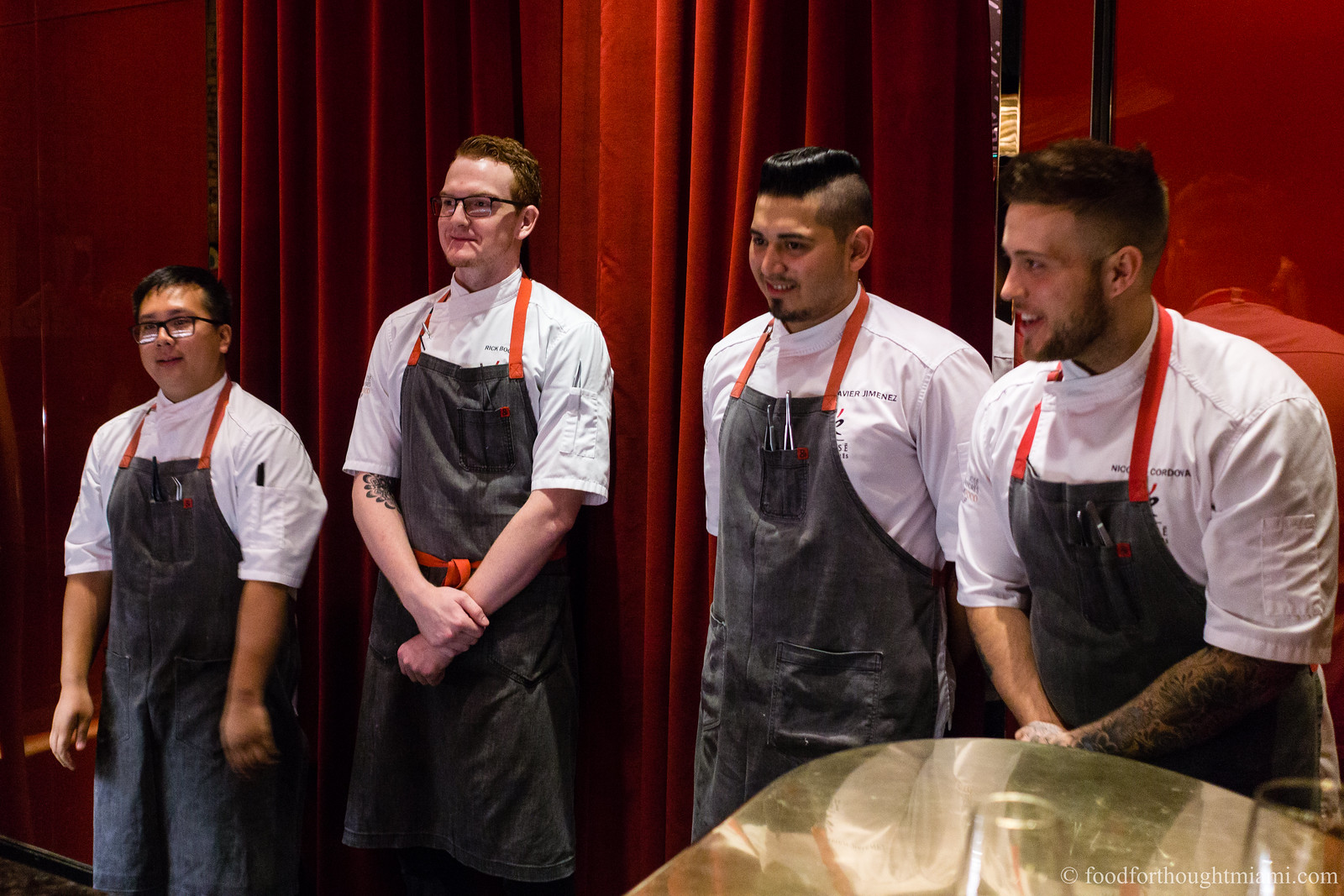
No comments:
Post a Comment